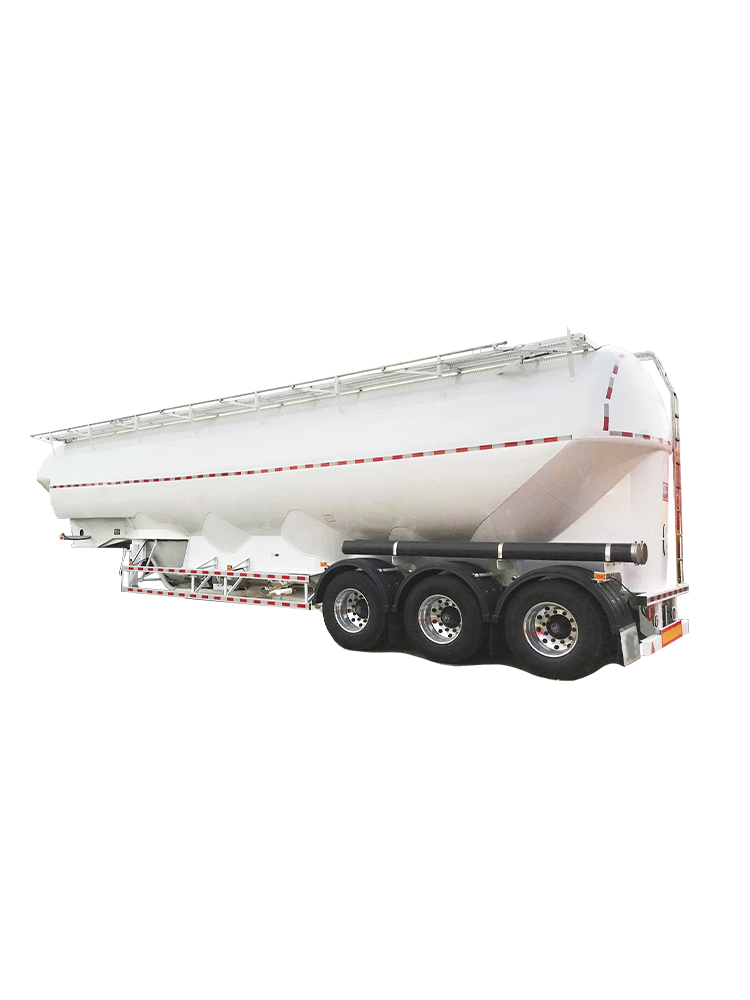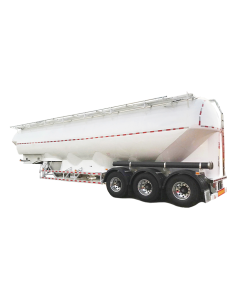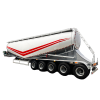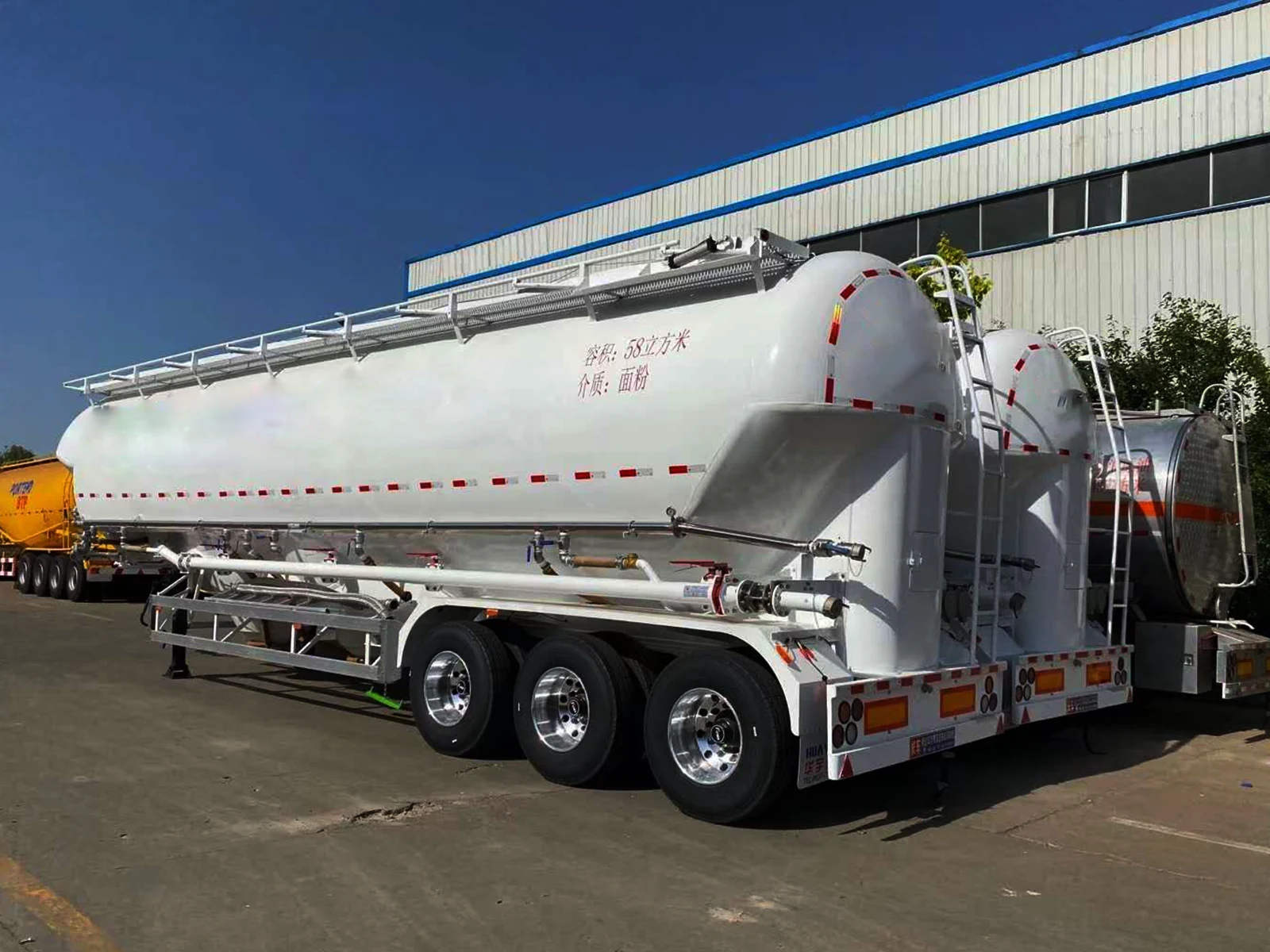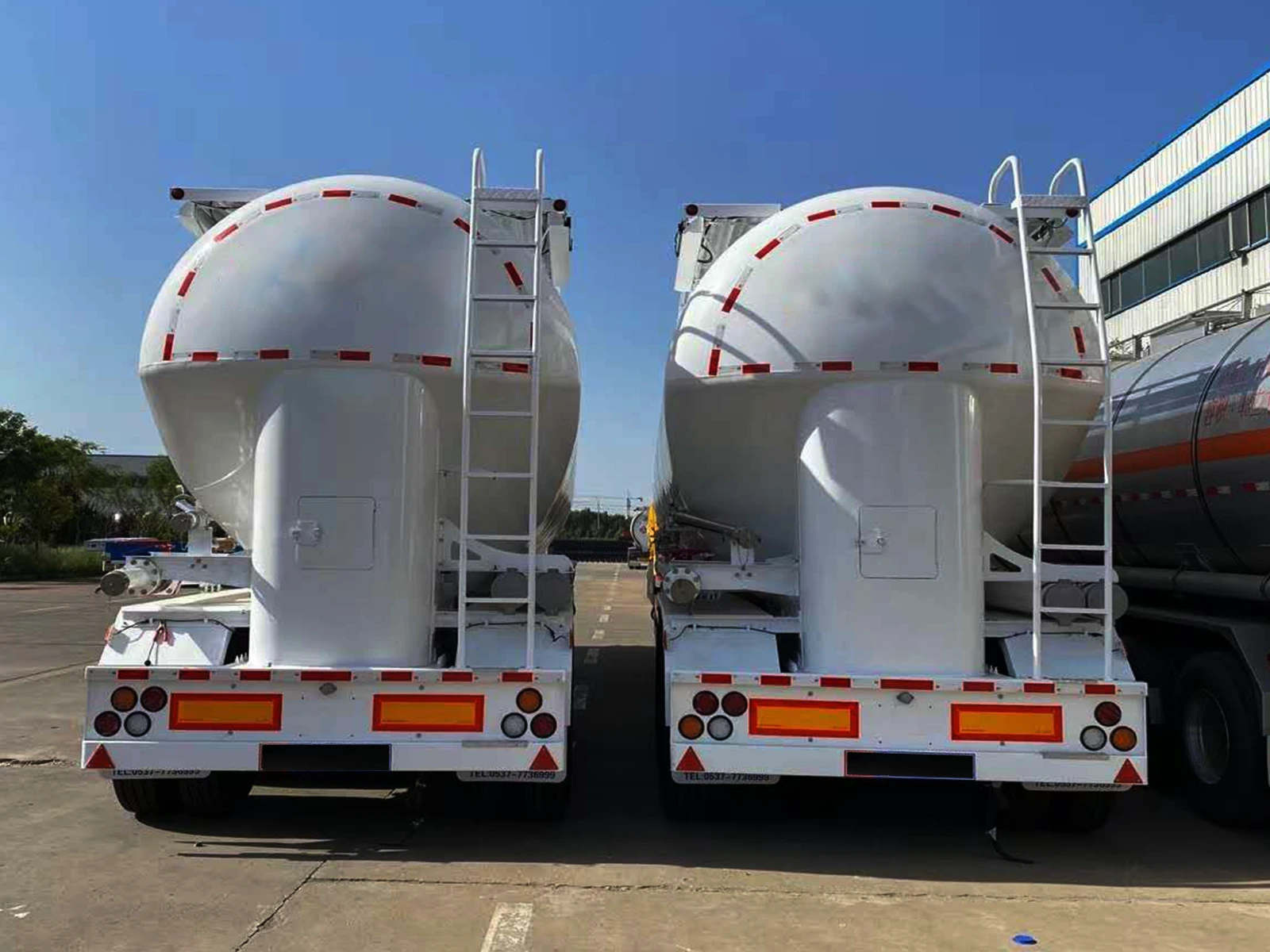.tg {border-collapse:collapse;border-spacing:0;}
.tg td{border-color:black;border-style:solid;border-width:1px;font-family:Arial, sans-serif;font-size:14px;
overflow:hidden;padding:10px 5px;word-break:normal;}
.tg th{border-color:black;border-style:solid;border-width:1px;font-family:Arial, sans-serif;font-size:14px;
font-weight:normal;overflow:hidden;padding:10px 5px;word-break:normal;}
.tg .tg-0pky{border-color:inherit;text-align:left;vertical-align:top}
| Specification | |
|---|---|
| Dimension | 6,058 mm x 2,438 mm x 2,591 mm |
| Payload | 22KL |
| Material | SUS 316L |
| Thickness | Tank Body:6mm; End Plate:6mm |
| Application | General purpose liquids |
| Application | Construction equipment, agricultural machinery, engineering and construction materials, wind power generation equipment |

Flour tanker semi trailer
Flour tanker is a truck trailer specifically designed to transport flour or other powdered food ingredients. For this purpose, it usually has a sealed tank to ensure that he goods are free from contamination or dampness. As a result, this type of truck is suitable for food processing plants, bakeries, flour production plants, etc. to ensure the safe and hygienic transportation.
In addition, Flour Trailer helps to maintain the safety and quality of the product. In detail, it ensures it’s transported in a hygienic, sealed environment that protects it from moisture and contaminants. Besides, the trailer also enables large volumes of product to be moved at once. In short, this kind of tankers increases efficiency and reduces transportation costs.
Main Parts of Flour Tanker
1.Tank Body: This is the largest component of the tanker and serves as the main storage area for the flour. In detail, it is airtight to protect the flour from moisture and contaminants. In addition, the interior is usually smooth to facilitate easy loading and unloading and to minimize residue.
2.Pneumatic System: This includes an air compressor (either truck-mounted or standalone), air hoses, and valves. The pneumatic system is used to pressurize the tank for loading and unloading the flour. During loading, the air pushes the flour into the tank, and during unloading, it pushes the flour out.
3.Discharge Pipe/Outlet: This pipe is where the flour is expelled when the tank is pressurized during unloading. It is often fitted with a rotary valve to control the flow of flour out of the tanker.
Filling Pipe/Inlet: This is where the flour is introduced into the tank during loading. It is often located on the top of the tank
4.Manhole: It’s an access point on the tank for cleaning and inspection purposes. It is crucial to maintain hygiene and ensure that no remnants from a previous load contaminate a new load.
5.Air Reservoir: This component stores pressurized air from the compressor to be used during the unloading process.
6.Pressure Gauges and Safety Valves: Pressure gauges are used to monitor the pressure inside the tank during loading and unloading, while safety valves are designed to vent excess pressure to prevent a dangerous buildup.
7.Chassis: This is the framework that supports the tank body and other components. It also includes the wheel and axle assemblies that allow the tanker to be towed.
FAQ of Flour Tanker Semi Trailer
Yes. This trailer is suitable for transporting powdery goods with poor flow. Cement requires professional cement trailers to transport.
Because this trailer is specially designed to transport flour, with a volume of 60cbm and a carrying capacity of 35 tons.
Flour tanker maintenance and cleaning are very important to ensure food safety and hygiene. Here are some things to note:
Regular cleaning: Flour tankers should be cleaned regularly, especially before transporting different types of food ingredients. Use food-grade detergent and high-temperature water for cleaning.
Check for tightness: Make sure the tank has a good seal to prevent air, moisture or contaminants from entering.
Material inspection: Regularly check the tank material for damage or corrosion, and repair or replace it in a timely manner.
Unloading system maintenance: If the flour tanker uses a compressed air unloading system, ensure that components such as the air compressor and valves are operating properly.
Record Maintenance: Maintain maintenance records to track maintenance history and inspection intervals.



